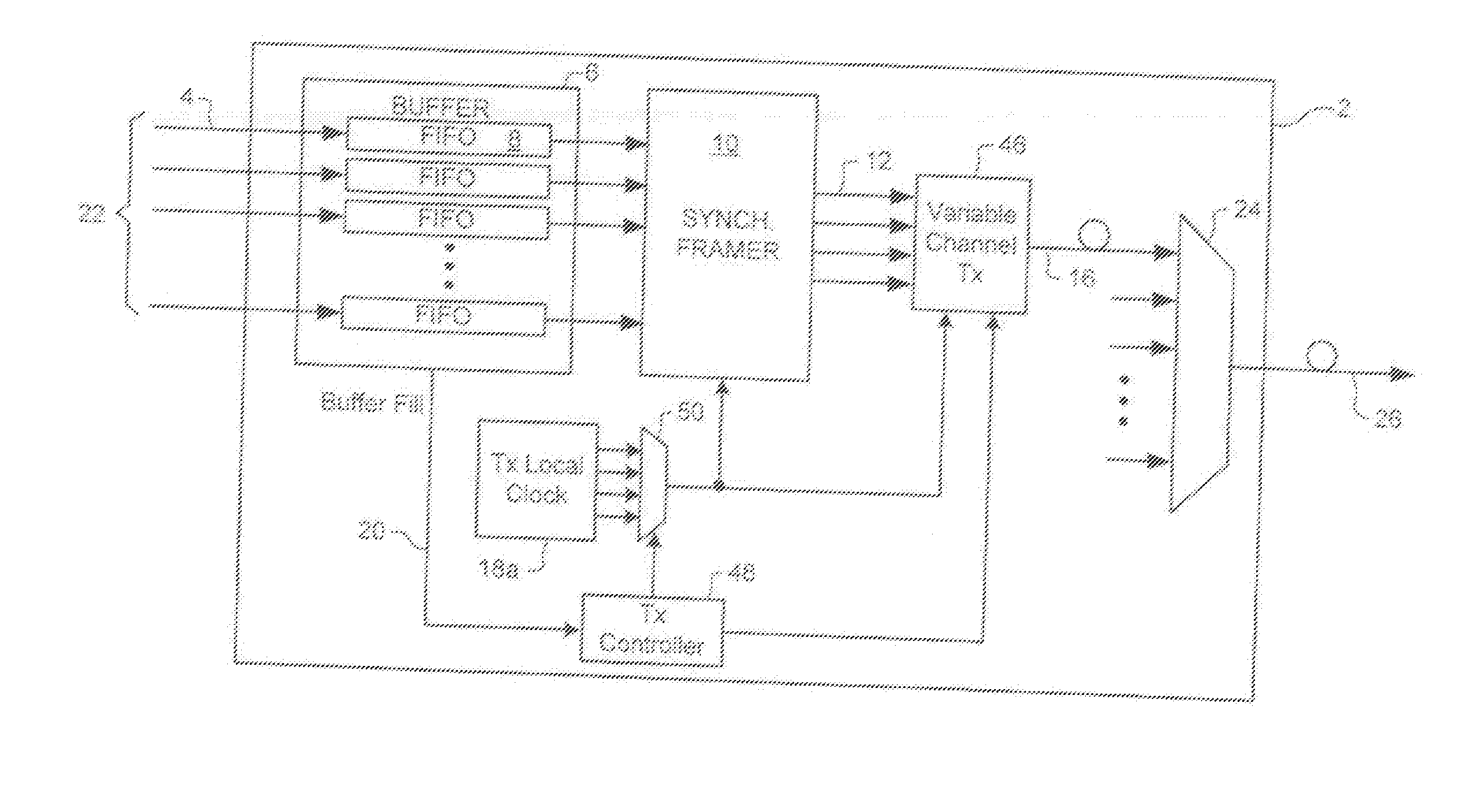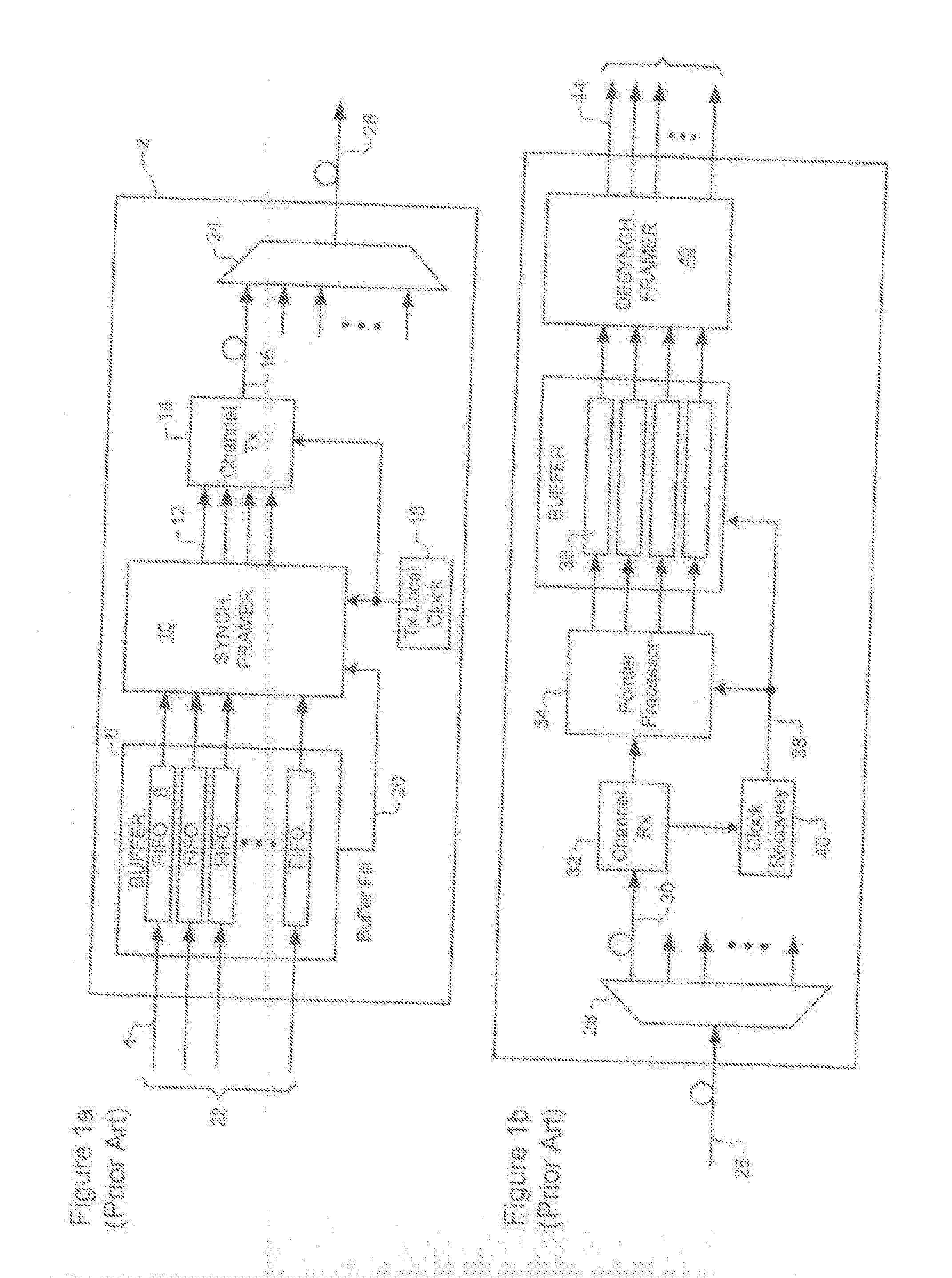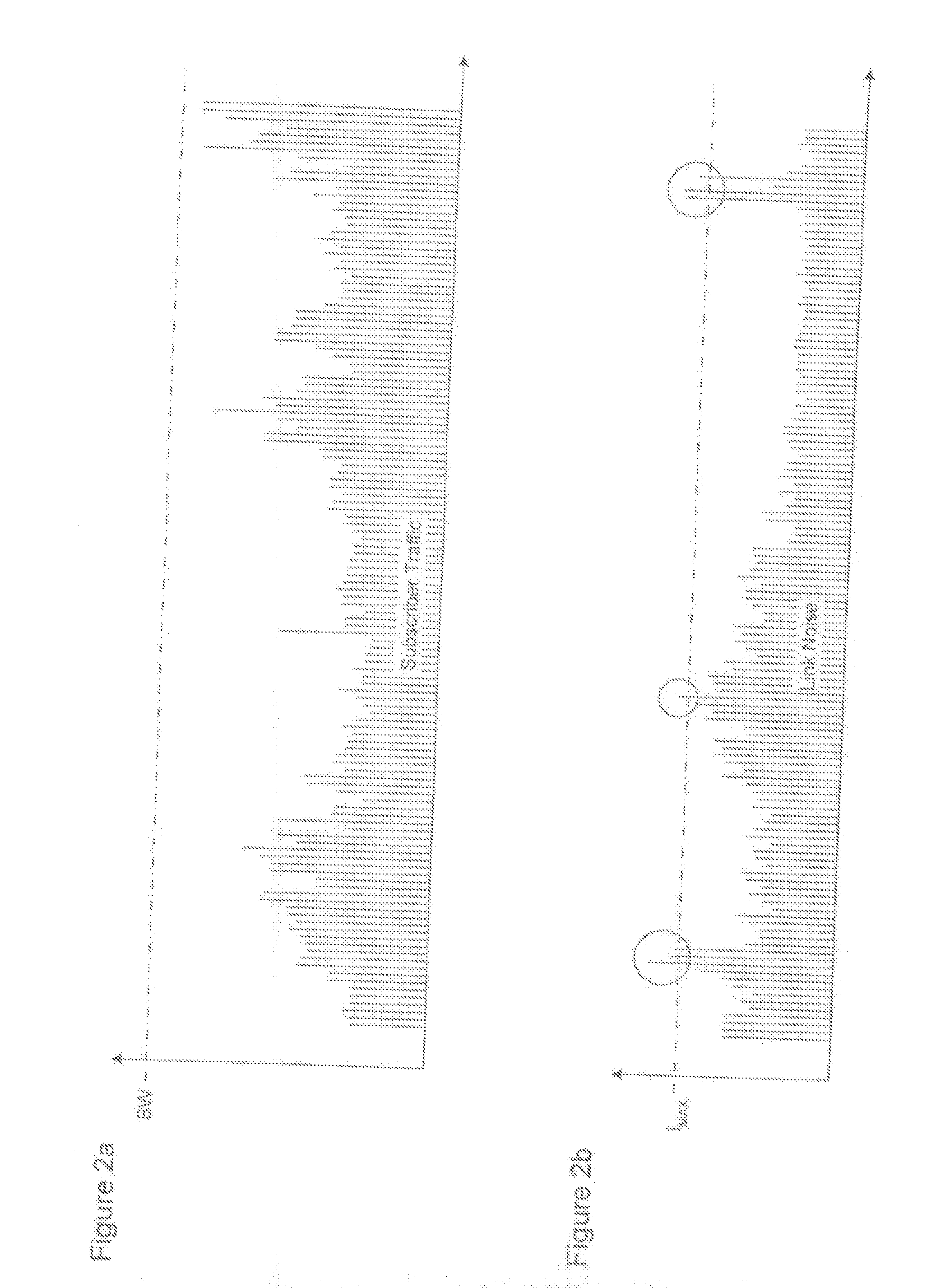Traffic driven variable bandwidth optical transmission
a technology of optical transmission and variable bandwidth, applied in the field of optical transmission systems, can solve the problems of reduced headroom, reduced bandwidth of optical communication links, and reduced bandwidth of instantaneous traffic within links of optical networks
- Summary
- Abstract
- Description
- Claims
- Application Information
AI Technical Summary
Benefits of technology
Problems solved by technology
Method used
Image
Examples
Embodiment Construction
[0023]The present invention provides a method and apparatus for enabling traffic driven variable bandwidth optical transmission in an optical communications system. In order to facilitate understanding of the present invention, a brief description of prior art transmission systems is provided below with reference to FIGS. 1 and 2. Embodiments of the present invention will then be described with reference to FIGS. 3-6.
[0024]FIG. 1a is a block diagram schematically illustrating principal operations of a transmitting node 2 of an optical communications system. As shown in FIG. 1a, asynchronous subscriber signal traffic within multiple tributaries 4 is received by the node 2 and buffered in an elastic store 6. The traffic may comprise any arbitrary mix of signals, including Asynchronous Transfer Mode (ATM), Internet Protocol (IP), and Gigabit Ethernet traffic. Traffic within each tributary 4 is normally buffered in a respective First-In-First-Out (FIFO) buffer 8. A synchronising framer ...
PUM
 Login to View More
Login to View More Abstract
Description
Claims
Application Information
 Login to View More
Login to View More - R&D
- Intellectual Property
- Life Sciences
- Materials
- Tech Scout
- Unparalleled Data Quality
- Higher Quality Content
- 60% Fewer Hallucinations
Browse by: Latest US Patents, China's latest patents, Technical Efficacy Thesaurus, Application Domain, Technology Topic, Popular Technical Reports.
© 2025 PatSnap. All rights reserved.Legal|Privacy policy|Modern Slavery Act Transparency Statement|Sitemap|About US| Contact US: help@patsnap.com



